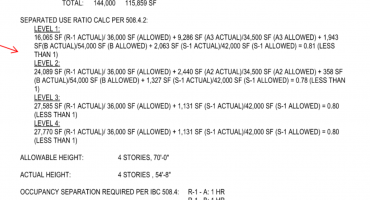Sifu
SAWHORSE
- Joined
- Sep 3, 2011
- Messages
- 2,800
I have a 4 story, VA, separated mixed use (R1, A3, A2, B, S1) building with an NFPA 13 system. The aggregate sum of the allowable areas exceeds 3. They are allowed to not exceed 4 if separated and an NFPA 13R system is installed. Why is the threshold higher for a 13R system? It seems counter-intuitive, but I am not a sprinkler expert.

